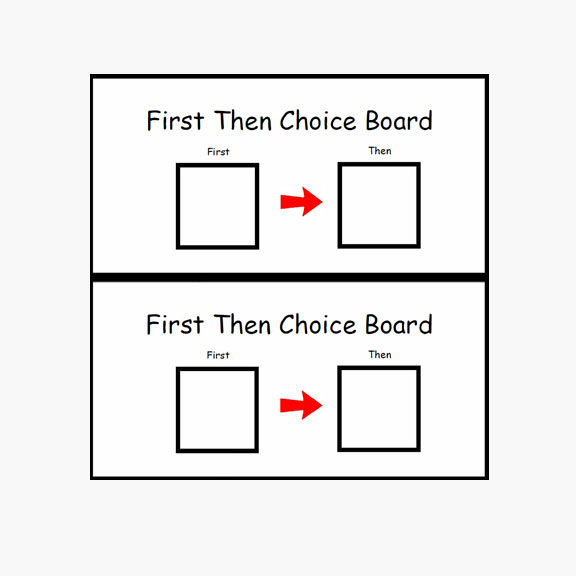Why is a visual schedule important?
A visual schedule is used to teach new skills and promote independence. Using a visual schedule helps to provide a routine in many situations. Teaching a child to follow a visual schedule is a skill that will benefit him/her in school, at home, and while out in the community.
Tip #1
- Use pictures that are simple with no distractors in the background.
For example, use a simple clip art picture or remove other items in view and take a picture of an item on the table or in a room.
Tip #2
- Start with a basic “First/Then” schedule. One of the first skills we work on is “first/then”.
Have the child engage in a less preferred activity in order to gain access a more preferred activity or item. For example, first math, then iPad time. Using a “first/then” visual provides a small visual schedule for the child to know what to expect.
Tip #3
- Make it doable and not overwhelming.
Depending on your child’s level of tolerance, it is best to focus on one activity at a time. You can slowly extend the visual schedule to more than one activity over time. However, it’s important to remember not to make the schedule too overwhelming. For some children, seeing their entire day on a visual schedule can be too much to process. In other cases, it’s better to chunk the day into smaller time periods. For example, a visual schedule for morning activities, midday activities, and afternoon activities.
Tip #4
- Break up preferred activities with less preferred ones.
It’s a good idea to scatter more preferred tasks with less preferred tasks. If you know that your child has a few work tasks in a row, put a more preferred activity into the schedule to break it up. For example, first math, Simon says, spelling, then iPad.
Tip #5
- Reinforce independence.
Always reinforce independence (“Great job! Awesome work!”) whenever a schedule is completed independently. For example, when completing chores, independent work activities, or activity schedules. If a child needs support or prompting, you should start out with a model, gestural prompt, partial physical, or partial verbal before providing full verbal or full physical prompting.


Blue Bird Day fosters socialization, sensory regulation, and pre-academic learning in children ages 2-7 years in therapeutic rotations that simulate preschool and kindergarten settings. Our compassionate therapists practice a relationship-based and family-centered approach, provide parent training, and collaborate on goals and individualized intensive treatment plans for your child.
We believe in a collaborative and multi-disciplinary team approach to therapy. A team of occupational therapists, speech-language pathologists, dietitians, developmental therapists, behavioral therapists, physical therapists, and therapeutic assistants are created for each child to ensure child and family are fully supported and the best possible results are achieved.
Options for individualized, group and virtual therapy sessions are available as well.
Want to learn more or you have a specific question? Feel free to connect with us here!



